Eli Broad looks back at the evolution of L.A.’s most important arts hub

- Share via
Introduction
Entrepreneur and philanthropist Eli Broad has been compared to Lorenzo de’ Medici, a patron without peer who has played major roles at arts institutions throughout Los Angeles. Here Broad looks back at the creation and development of MOCA, the Walt Disney Concert Hall and the Broad museum — which have reinvigorated Grand Avenue and downtown and elevated the city’s profile as an international cultural capital.

FULL COVERAGE: Grand Avenue project »
In 1963, when my wife, Edye, and I moved here from Detroit, Los Angeles did not have what I thought of as a true downtown. As we flew into LAX, the ground below us called to mind the old saying “Los Angeles is 100 suburbs in search of a city.”
Los Angeles had developed very differently from cities like New York, Chicago and San Francisco. In the first half of the 20th century, financial institutions, department stores, and hotels and restaurants lined streets like Broadway and Spring, and Bunker Hill was still home to a series of elegant, historic structures. Eventually, an expanding car culture and freeway network made it easier for Angelenos to explore a new series of attractions: the suburbs. Their exodus contributed to a decline in downtown’s once-flourishing neighborhoods and the institutions that served them. By the late 1950s, various government agencies started to look at redeveloping Bunker Hill.
The urban renewal efforts were slow-going, but not long after we moved to Los Angeles, something interesting started to rise: the Music Center, which turned out to be a beautiful performance space with classical yet modern architecture. It looked like Lincoln Center.
A great city needs a vibrant center where people come to enjoy cultural riches like museums, dance, opera, theater and the symphony, or to take part in civic life at parades, protests and celebrations. The Music Center — including the Dorothy Chandler Pavilion, Mark Taper Forum and the Ahmanson Theatre — was a start, but it was almost 20 years before another cultural institution arose on Bunker Hill: the Museum of Contemporary Art.
Museum of Contemporary Art
Starting in the 1950s, Los Angeles became home to brilliant artists — David Hockney, Sam Francis, Robert Irwin, Ed Ruscha, James Turrell, John Baldessari and Ed Kienholz among them — and a growing network of top-notch art schools and galleries. But we didn’t have a modern or contemporary art museum.
I started to get interested in contemporary art in the 1970s. Edye had always loved it, but it took time for me to overcome the “shock of the new,” as art critic Robert Hughes put it. In fact, the first major artwork we purchased wasn’t even a contemporary piece; it was a Van Gogh drawing we bought at Sotheby’s for $95,000 in 1972.
We learned a lot about collecting contemporary art from our friend Taft Schreiber, a Republican fundraiser and entertainment executive whose home was filled with works by Henri Matisse, Alberto Giacometti, Jackson Pollock and Constantin Brancusi. It was through Schreiber that we met other contemporary collectors, including Fred and Marcia Weisman, who had their own enviable art collection and were famous for doing anything and everything for their art, such as buying seats on a plane for a sculpture, or postponing purchasing a home so they could buy art. (Marcia’s brother, Norton Simon, is better known these days, but it was Marcia and Fred who first championed access to contemporary art.)
Marcia Weisman, who had a remarkable force of will, wanted L.A. to have a contemporary art museum. Eventually she enlisted me in her cause, and I agreed to be chairman of the board for something that didn’t yet exist. Bill Norris, a federal appeals court judge, became president.
I soon learned why it was so hard to raise funds for and establish a museum. The 1970s were a tough time economically, and L.A. didn’t have a lot of old-style, old-money philanthropists, as New York or Chicago did.
I also had the sense that many people associated with the Los Angeles County Museum of Art thought a contemporary art museum would be a competitor.
We got a lucky break one night, when Marcia Weisman sat next to Mayor Tom Bradley at a dinner. Bradley had a vision for Los Angeles as a great global city, and she pitched him on the museum. Bradley agreed to name a committee — including Marcia, Norris and me — to establish the museum.
The first thing we needed was a location, and we had the Community Redevelopment Agency of Los Angeles — one of a series of agencies authorized by the state to renew struggling areas of California cities — to help. CRA officials talked to us about a number of sites, but when they mentioned Bunker Hill, a space that was underdeveloped and disconnected, something clicked. We already had the Music Center, an anchor of the city’s cultural life, and with the addition of a museum devoted to contemporary art, Bunker Hill would have the beginnings of a true city center.
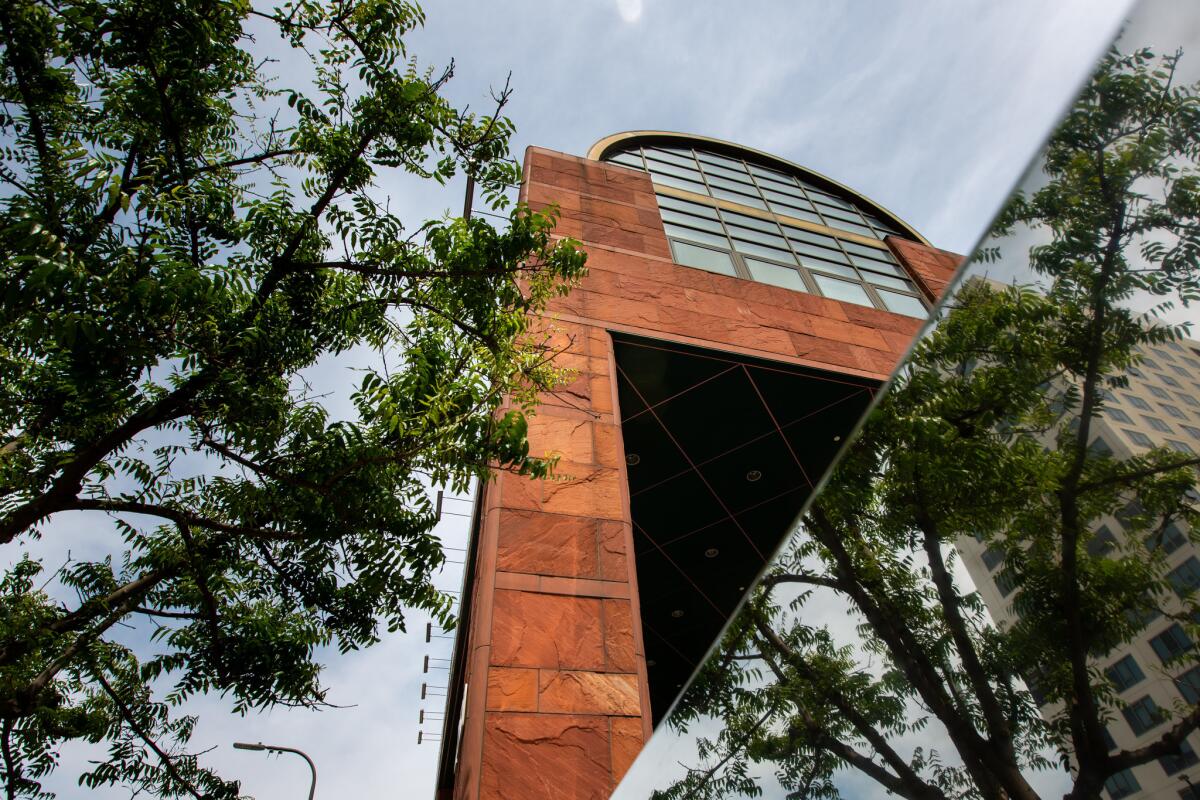
Bradley had already been advocating for a plan for Bunker Hill, one that would bring apartments, a hotel and skyscrapers to an area that would come to include California Plaza. The CRA required developers to pay a 1.5% fee to fund public art, and it occurred to us that we could use that 1.5% to build a new museum on Grand Avenue. Given the size of the project, that could amount to $16 million.
But the mayor said we couldn’t have those funds unless we raised $10 million for an endowment for the new museum within one year. I kicked things off by pledging $1 million, and as chairman of the board, I was responsible for raising the other $9 million. The first significant gift came from Robert O. Anderson, who founded Arco and was a big contemporary art fan. Anderson lived in New Mexico and came to L.A. for meetings, so we met on a Sunday night at our home. Two days later, he gave us $1 million.
That still left us with a lot of money to raise. We decided to hire a development director — businesswoman and civic leader Andrea Van de Kamp — and we put together a long list of potential donors and figured out who should call whom, starting with 10 people who could afford $100,000 or more. Then we figured we could get several families to give five-figure amounts. And finally we came up with what everyone thought was a crazy idea: We would name anyone who donated $10,000 or more a “founder” of the museum. Meanwhile, I ran around town giving speeches about the future of Los Angeles, telling everybody who would listen that MOCA would be the most important art museum since the Museum of Modern Art was founded in 1929 in New York.
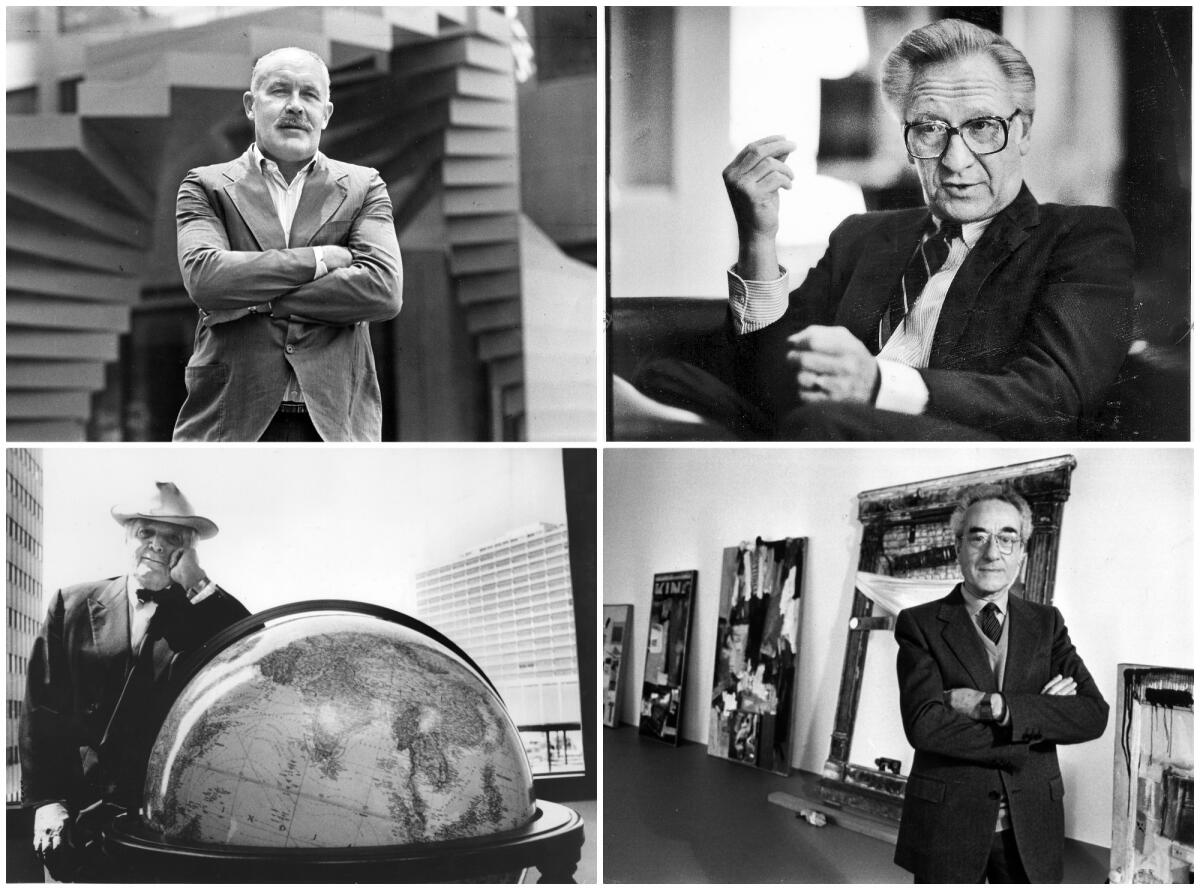
Few really believed we had a chance of achieving that status until we hired MOCA’s first director, Pontus Hultén, who founded the Moderna Museet in Stockholm and ran the Centre Pompidou in Paris. He was one of the first Europeans to show such American artists as Andy Warhol, Robert Rauschenberg and Jackson Pollock. Art people who thought Los Angeles was just a provincial town were surprised that he would come to us.
By summer 1981, Mayor Bradley’s deadline, we had not just $10 million but $13 million for an endowment, or about $36 million to $37 million in today’s dollars. With Hultén’s help, we recruited an impressive, international board of trustees. But we still didn’t have a building and a substantial collection, and we were trying to open before the 1984 Summer Olympics.
The board had agreed on an architect, Arata Isozaki of Japan, but the developers — Bunker Hill Associates, a consortium of three firms — wanted to put the museum inside its condo building, which I thought was insulting.
I managed to convince the developers that the museum would attract foot traffic and shouldn’t be tucked away somewhere. Eventually, they agreed to a building that fronted Grand Avenue but insisted on having part of MOCA tucked underground so that people walking by could see more of their buildings from the street. Without that, the developers said, there would be no deal. We had no choice but to agree.
It was an unfortunate compromise for Los Angeles, for a talented architect (who won this year’s Pritzker Prize) and for me. As chairman of the board, I had led negotiations between the museum board, the developer and the city — and I’m not sure I did enough to get the landmark we needed.
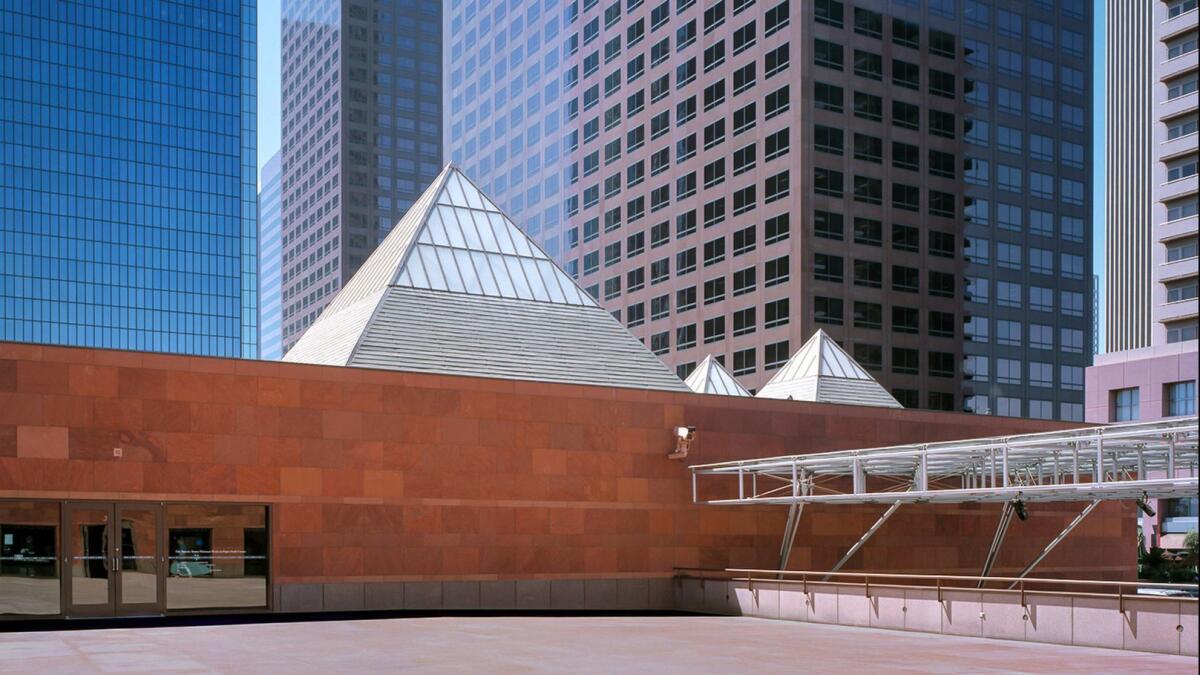
That wasn’t the worst of it. High interest rates were slowing down construction projects at the time — and it started to look as if there would be only a hole in the ground by the Olympics. Then Hultén announced he was leaving — but he left us a parting gift: the suggestion that we put up a temporary gallery space. He even found a location in Little Tokyo — in an old warehouse on Central Avenue that used to store police cars and ammunition for the Police Department.
It was a brilliant idea that might have saved the whole effort. The Temporary Contemporary, today called the Geffen Contemporary, was a hit when it opened in 1983. We put on several exhibitions during the Olympics, and construction on MOCA started not long after.
MOCA already had some art, about 100 works, thanks to loans and donations, and it was a lucky break when a large, high-quality collection practically fell into our hands.
One of our trustees, Count Giuseppe Panza di Biumo, was a renowned collector with a great eye. He had hundreds of works that he kept in two big castles in Italy, but he also kept about 80 contemporary masterpieces in Zurich.
The count was facing a new law that required citizens to sell anything they held outside the country and then bring the money back to Italy. If they didn’t sell, then they had to bring their property back and pay 20% tax on the value. Panza’s art had appreciated so much that there was no way he could afford the tax.
This was a once-in-a-lifetime opportunity. Panza’s collection — seven Rothkos, 12 Klines, 11 Rauschenbergs, four Lichtensteins, eight Rosenquists and 16 Oldenburg sculptures, among others — would amount to an astonishing acquisition of contemporary art by any institution.
With some convincing from me, Panza eventually agreed to give MOCA a chance to buy his collection sometime before the end of the year — 1983 — for up to $12.5 million. Everybody was trying to buy this collection. (I would’ve bought it myself if MOCA hadn’t, and I threatened as much when MOCA’s board didn’t want to make the purchase. Eventually the board members agreed to let me negotiate for the collection but said I couldn’t pay more than $12 million, with a down payment of $2 million.)
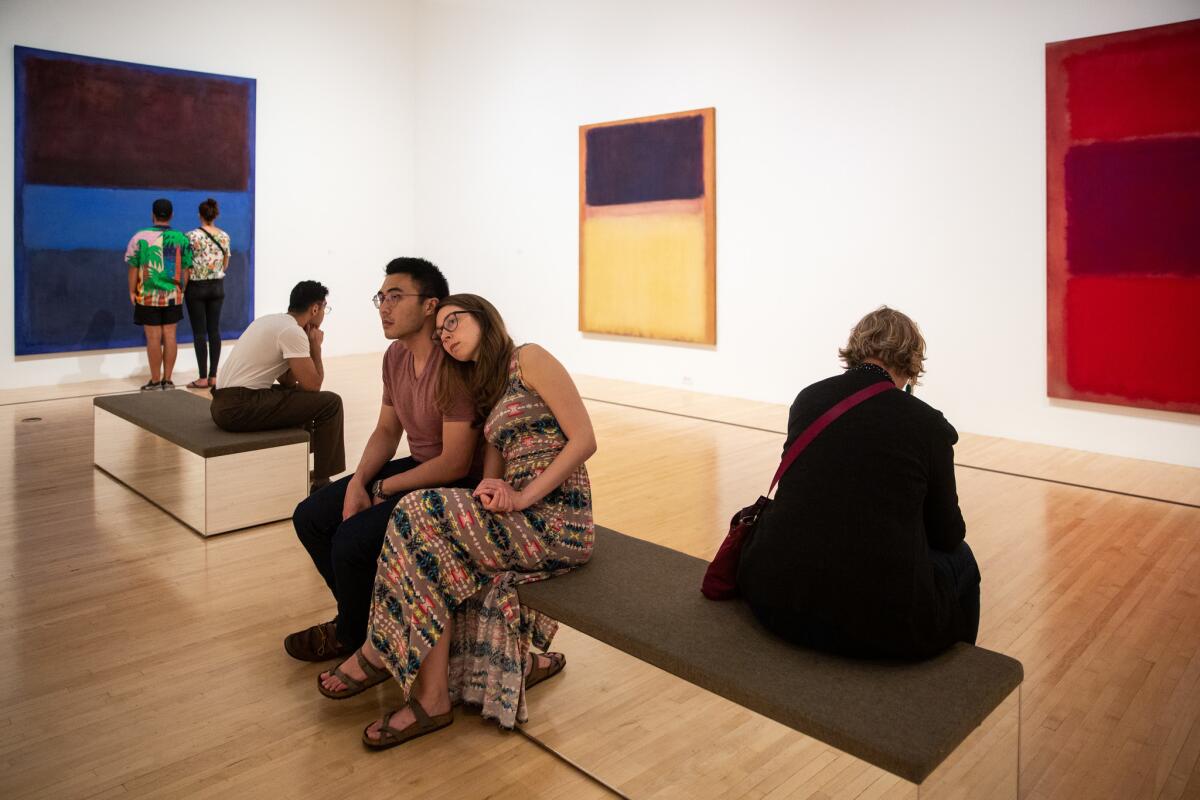
The count and I met at our home in the afternoon — convenient, since he and his wife were staying in our guesthouse. I offered him $11 million, with $1 million up front, and the rest over seven years, interest-free. Panza thought that time frame was too long, so I asked, “What about $12 million over seven years?” He liked that better, but he still wanted $2 million down. I told him that if he took more up front, he would lose money because of how quickly the lira was dropping in value. That convinced him. We put it all down on a piece of paper, handwritten, and signed it by dinner.
Today, those artworks are worth well over $1 billion.
When MOCA opened on Grand Avenue in 1986, we finally had it all: a building, an endowment, a collection and a home on Bunker Hill. By then, I’d been off the MOCA board for two years, and, to be honest, everyone on the board — including me — agreed I’d probably stayed a few years too long. Some people find me quite demanding. I think everyone was happy when Bill Kieschnick, the chief executive of Arco at the time, took over from me.
Walt Disney Concert Hall
A year after MOCA opened its Grand Avenue building, Lillian Disney donated $50 million to create the Walt Disney Concert Hall for the Los Angeles Philharmonic. At the time it was one of the largest single donations to the arts in the United States.
For decades, the Phil had played at the Dorothy Chandler Pavilion, a wonderful building but one that served many purposes, including a packed calendar of opera, dance performances, concerts and, upon occasion, the Oscars. A new hall would be a home for the Phil and, thanks to the selection of Frank Gehry as architect, a landmark for Los Angeles.
Lillian Disney, Walt’s widow, chose the site, a county-owned piece of land across 1st Street from the Music Center, and in 1991, the first design was unveiled, with a price tag of $110 million.
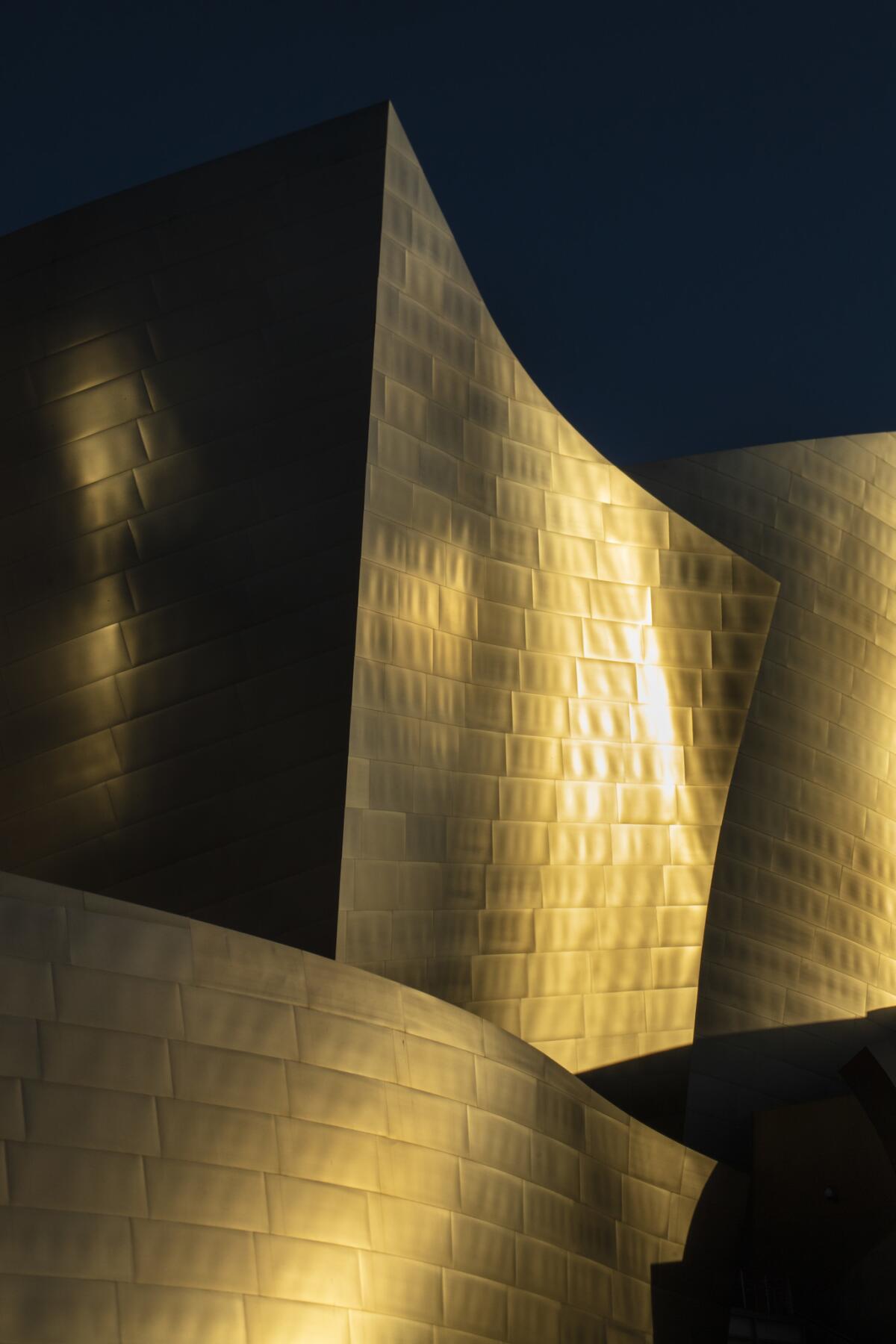
Of course, nothing comes easily on Grand Avenue. The economy continued to fluctuate, and there were delays caused by disagreements over architecture and planning. Contractors raised their estimates for Gehry’s unusual design. The parking garage, funded by a county bond issue, wasn’t done when the Northridge earthquake hit in 1994, and at one point, county officials threatened to take back the land. Work on the project stopped.
Everyone started saying Disney Hall was dead. I remember Newsweek calling it the “temple of doom,” which didn’t help with donors. Then Diane Disney Miller — Lillian and Walt Disney’s daughter — asked for help from Mayor Richard Riordan, a friend of mine going back to the ’70s. He came to me not long afterward, and we agreed the hall couldn’t die. Our city was hurting after a recession, civil unrest, fires and an earthquake. Disney Hall wouldn’t solve the city’s problems, but it would be a symbol of what we could accomplish together.
I called Van de Kamp, then the head of the Music Center’s board, and off we went, just as we did two decades earlier. We got a “no” here and there, but two of our initial asks — the Times Mirror Foundation and one anonymous donor — each promised us several million dollars. That anonymous donor turned the tide — people were intrigued, and they wanted to know more.
We kept at it, with calls, breakfasts, coffees and dinner meetings all over town. We started with a list of about 60 companies, foundations and people whom we thought could handle a $5-million gift or more. Riordan had sway as mayor, Van de Kamp was a people person, and I wouldn’t leave anyone alone until I got a yes. Soon we had $10 million from Arco, $15 million from Ron Burkle and his companies, and some other gifts. Riordan and I each pitched in $5 million. In six months we had what we needed — $52 million — to get construction rolling again.
Everything was moving along well, and we were almost to $100 million by spring 1997. But then we hit more hurdles, had some false starts and faced more delays. I was under a lot of pressure to keep the project on schedule so that the building would actually go up and donors wouldn’t back out.
At a moment when it looked as if it could be 1994 all over again, Miller and Gehry got the ball rolling once more. She put in more money to cover the additional time that Gehry and others needed, and I reluctantly gave in on extending the timeline and got back to fundraising. In 1998, once we had enough money, I stepped down as chairman and asked Bill Siart to succeed me and work with the contractor and others to get the hall built. In 1999, construction of the hall officially began, with an estimated price tag of $274 million.
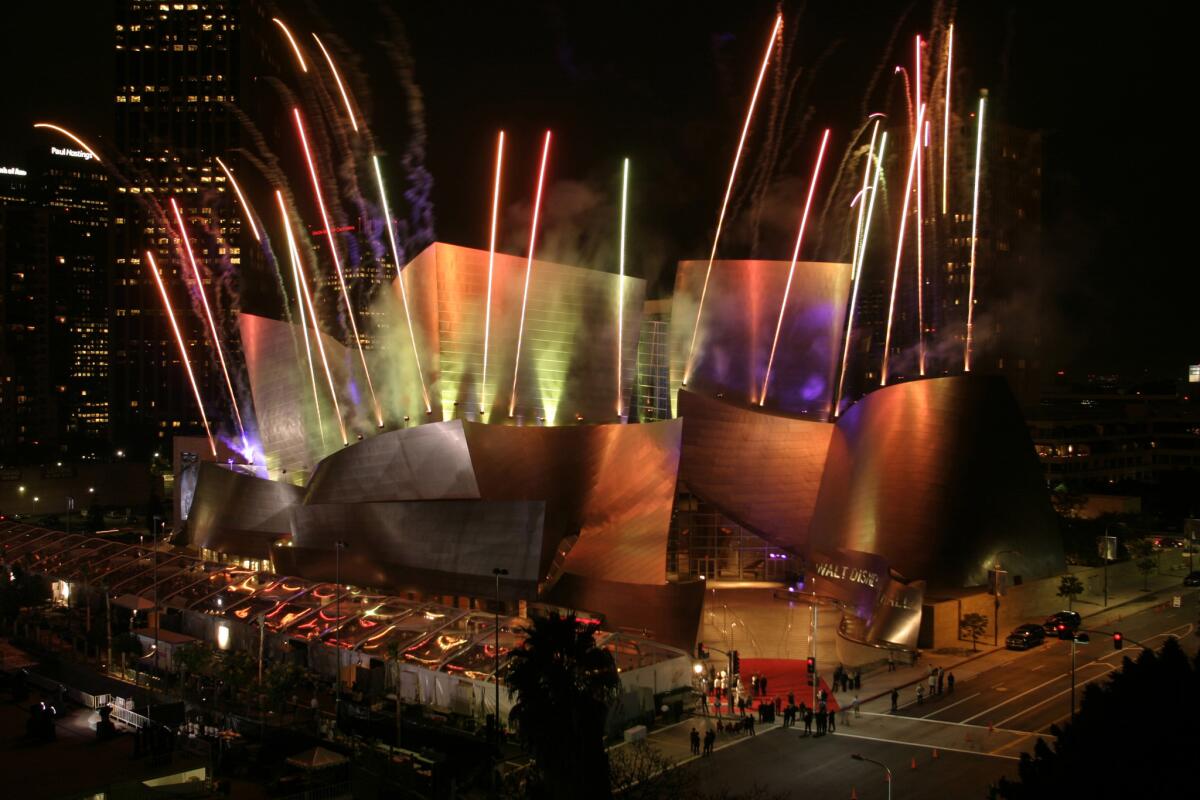
Disney Hall, which opened in fall 2003, received international acclaim, and some time after, Deborah Borda, then president and chief executive of the Phil, was able to recruit Gustavo Dudamel as the new music director.
While Disney Hall was under construction, it became clear that Grand Avenue needed a full-scale master plan. There were still many empty parcels and underused parking lots and no large sidewalks or streetscaping to connect the landmarks. The biggest challenge was that different governments — city and county — owned different parcels, and those governments did not always work well together.
The Grand Avenue Committee, which I co-chaired with Jim Thomas, was tasked with figuring out how to spark that collaboration, to streamline decision-making between two existing government bodies. (As far as we could tell, the city and the county had done this only once before — to create a crime lab, which was a little less ambitious than what we were thinking.)
After a lot of meetings and many drafts of a “joint powers agreement,” we were able to get to work on selecting a developer — New York-based Related Cos. — for a mixed-use residential and hotel complex across from Disney Hall.
It was Related that agreed to pay for a park on Grand Avenue — something I’d been thinking about for years. During the final presentation on the complex, I brought up the idea and asked Martha Welborne, managing director of the Grand Avenue Committee, “How much would a park cost?” Fifty million, she replied, and I said, “OK, so we need $50 million up front. Nonrefundable.” It put the developers on the spot, but it was a fraction of what the project was worth — $2 billion.
The Great Recession delayed things, but Grand Park finally opened in summer 2012, providing 12 acres of badly needed green space downtown. It is a vital gathering place where people from all over the region, of all backgrounds, come together to celebrate New Year’s Eve and the Fourth of July, to protest and fight for what they believe in, and to connect with their city.
The Broad

In November 2009, around Thanksgiving, I sat down for dinner with Los Angeles Mayor Antonio Villaraigosa. “I hear you want to build a museum in Santa Monica,” he said. “Why don’t you put your museum on Grand Avenue?”
I said, “Antonio, life is too short to deal with the city, the county, the CRA and the JPA [Joint Powers Authority].”
He had a good laugh at that, but he also knew what I meant.
Edye and I had set up the Broad Art Foundation in 1984 to create a free lending library for museums around the world, but we always wanted to bring contemporary art to the widest possible audience. Donating artwork to existing museums meant that about 95% of our collection would sit in storage, with no one to see it, and we realized the best way to do that was to create a museum for our collection, which included 2,000 contemporary artworks stored at three locations.
We’d been thrilled to see Grand Avenue develop into a cultural hub during our time in Los Angeles, and we thought our art collection might contribute to that development. But the JPA — a panel empowered by the city and the county — and Related Cos. were hoping to build apartments and retail on a parcel just south of Disney Hall, at the intersection of 2nd Street and Grand, leaving little room for a cultural space.

We were considering sites in Beverly Hills and Santa Monica, which had offered an 8-acre parcel right by its City Hall, along with such other benefits as a $1-a-year lease and design and construction funding. But Villaraigosa said, “We’ll give you whatever Santa Monica is offering.”
He didn’t have to convince me; Grand Avenue had always been my first choice. By early 2010, the Joint Powers Authority was open to negotiating with us about the parcel across the street from Disney Hall, which would give us the ability to build a 120,000-square-foot museum. Plus, it was close to MOCA, which Edye and I had continued to support over the years, including giving $30 million during the 2008 recession, when it almost went bankrupt.
Before we could begin planning the museum, we needed approval from the city, the county and the Community Redevelopment Agency. This took some time and effort, given that a few leaders saw the effort as elitist, or too focused on downtown at the expense of other regions. But we were eventually able to win the support we needed.
The trick was to find an architect who could come up with a design that wouldn’t clash with Disney Hall but wouldn’t be anonymous, either — so we sponsored a competition that attracted world-class architects. There were several exciting designs, but Diller Scofidio + Renfro had the best idea. Elizabeth Diller — who had won a fellowship from the MacArthur Foundation — came up with the concept of “the vault and the veil.” Inside the building was a “vault” that housed our collection, which visitors could look at through windows in the stairwell. Wrapping the outside of the building was a honeycomb white “veil” that let passersby see inside.
We believe we have reinvented the American art museum.
— Eli Broad
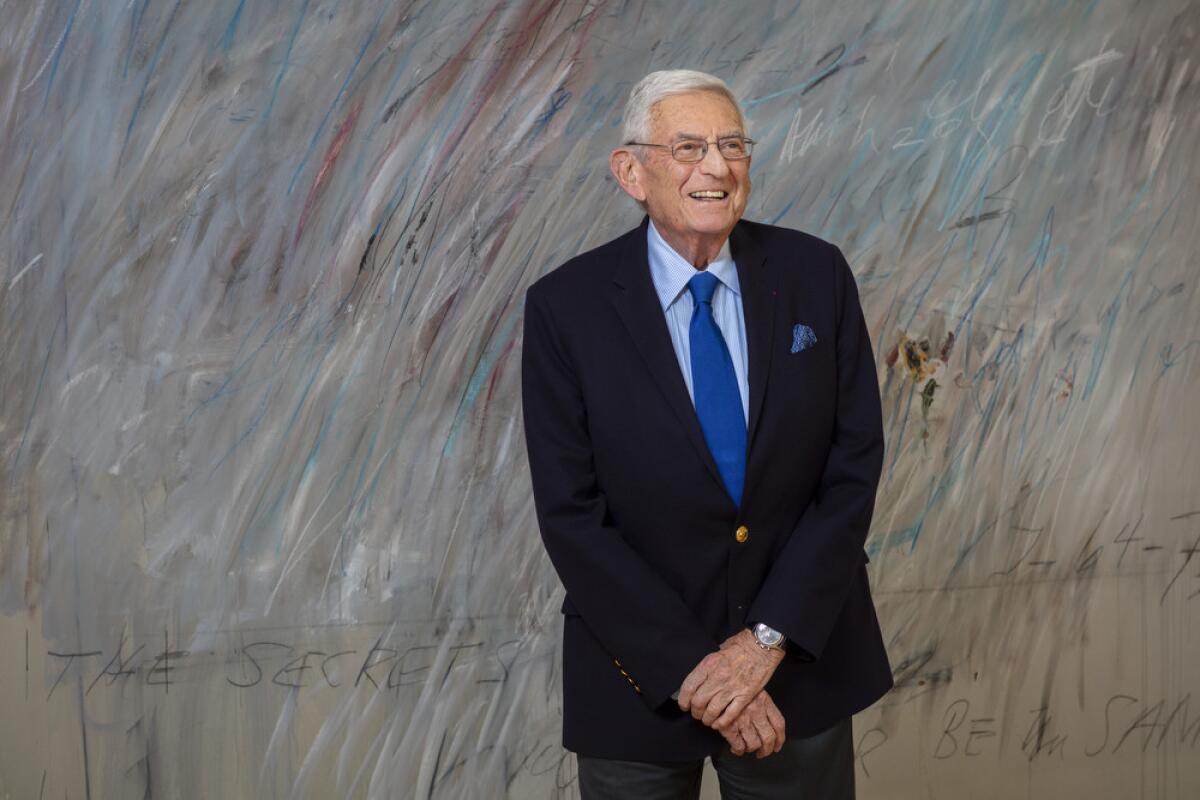
The Broad opened in September 2015, two years later than I wanted, but with a lot of fanfare. We had a civic dedication with Gov. Jerry Brown and Mayor Eric Garcetti and held two dinners for 800 each. Among the attendees were the directors of major art museums, including the Met and MOMA; university presidents such as Drew Gilpin Faust of Harvard; artists from our collection, such as Mark Bradford, Cindy Sherman, Takashi Murakami and Barbara Kruger — and former President Clinton, who delivered a keynote speech.
Our success is thanks, in no small part, to the leadership of our longtime curator, now the founding director of the Broad, Joanne Heyler. We thought we would have about 250,000 visitors a year. Instead, attendance has been exceeding 800,000 a year, and we are projecting 1 million visitors for 2019. We are grateful that the museum is appealing to diverse audiences and to young people — the average age of our attendees is 33, about 13 years younger than typical museum audiences nationwide. General admission is free, and three years later, we often have a line of people curling around the block, waiting to get inside.
We believe we have reinvented the American art museum, and Edye and I are proud to have committed more than $500 million (which does not include the value of the art) to create the Broad and an endowment that will allow generations of Angelenos and people from around the world to experience contemporary art.
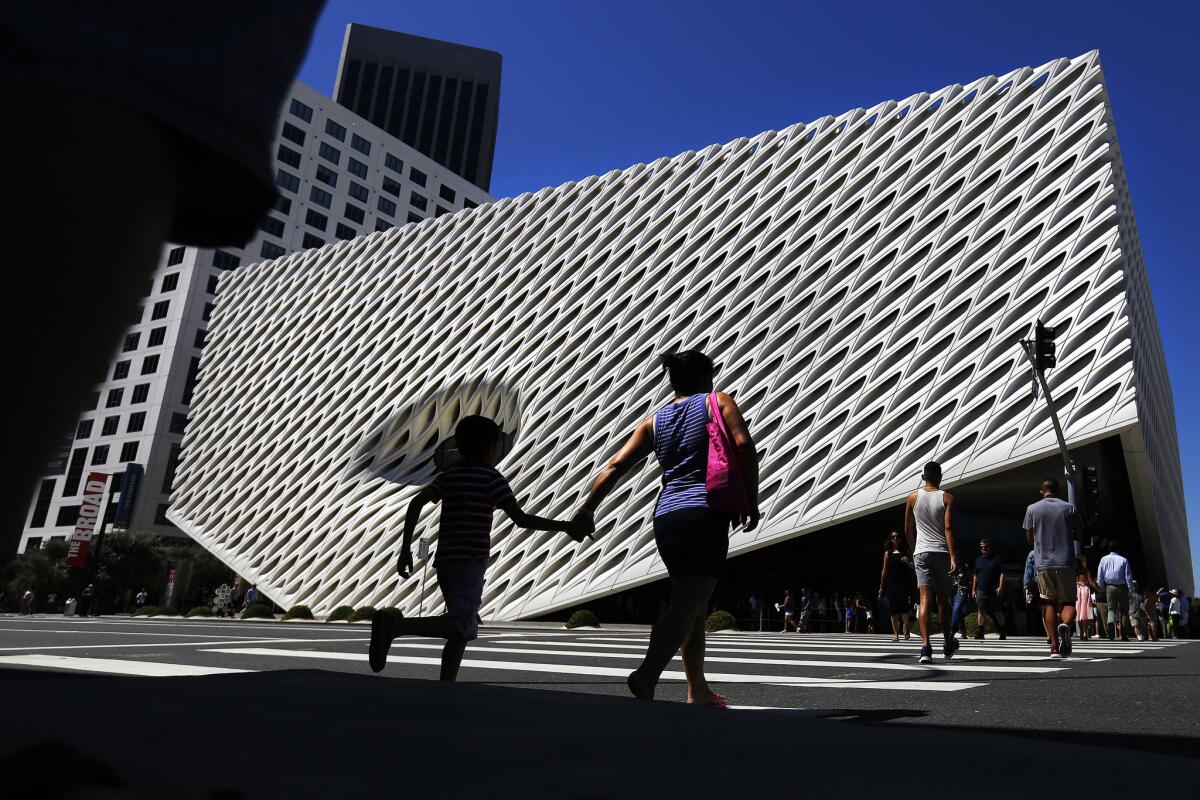
The biggest entertainment stories
Get our big stories about Hollywood, film, television, music, arts, culture and more right in your inbox as soon as they publish.
You may occasionally receive promotional content from the Los Angeles Times.







